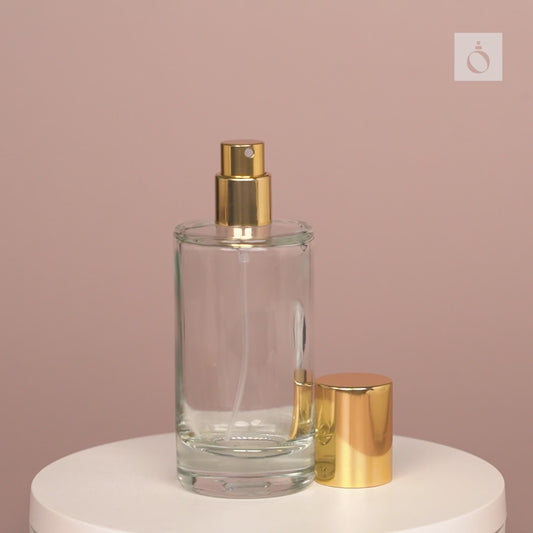Glass holds a venerable position in the perfume packaging world due to its purity, recyclability, and aesthetic appeal. However, it is so fragile which means it requires careful handling throughout production to consumers. For this reason, this blog post explores best practices to help[ one store and transport a glass bottles and perfume box so that they can reach the intended destination in good shape.
1. Understanding Glass's Unique Requirements
Due to its transparency and environmental consciousness, glass perfume packaging needs a second look because of its brittleness. The secret lies in recognizing the vulnerability of glass towards impact, temperature changes and pressure variations with time. Therefore, adopting a proactive approach to these problems is important in ensuring that glass containers are preserved safe by maintaining their qualities.
2. Implementing Effective Storage Solutions
a. Controlled Environment: Store glass bottles in a dry stable place where temperatures and humidity levels are carefully controlled at all times. High temperatures can affect the expansion or contraction of glasses leading them into cracks which may be caused by stress. Similarly high levels of air moisture could deteriorate the perfume box cardboard packing materials leading to instability among stacks.
b. Strategic Stacking: Use stacking methods like palletising which evenly distributes weight and prevents falling down of bottles on top of each other; heavier items should be on bottom while adequate spaces between stacks will prevent accidental knocks; interlocking patterns also help enhance stability.
c. Protection from Light: Glass bottles should be shielded away from direct sunlight or excessive artificial light especially where they contain coloured substances or light sensitive products; indeed these can affect product quality over time.
3. Customizing Packaging Materials
a. Cushioning and Shock Absorption: To prevent shock damage during transportation wrap each bottle individually with bubble wraps or use foam inserts; more specifically for long transport distances where risks of jostling as well as impacts are higher.
b. Quality Over Quantity: Instead of going for cheap perfume packing materials that may not withstand transport conditions it is better to choose expensive but high quality and durable ones. While this could raise the initial cost of shipping, it saves money and resources in the long run by reducing breakage.
c. Sealing and Waterproofing: Before shipment ensure that all containers are sealed correctly with external packing having water tight capabilities. This prevents label soiling as well as damage of cardboard paper based packing materials.
4. Emphasizing Load Stability During Transportation
a. Secure Loading: Glass containers in vehicles should not move while being transported. They can be stabilised by using straps, load bars or airbags to prevent loading and unloading shifts leading to container collisions.
b. Weight Distribution: Planning carefully on how weight will be distributed inside the transport vehicle is important since imbalances can cause accidents or damage; place heavier items at bottom while load is evenly spread all over the floor of a vehicle.
c. Smooth Transportation: The best way to avoid breakages is through selecting transportation methods which have less jerks, sudden halts and rough roads; smoother rides lead to lesser breakages.
5. Training and Awareness
a. Handling Training: All personnel involved in glass bottle handling, storing, and transporting must also receive specialised training on how to avoid such accidents.
b. Awareness of Material Properties: Therefore informing employees about glass’ strengths and weaknesses would promote cautious handling resulting from respect towards limitations of material use.
6. Regular Inspection and Quality Control
a. Pre-shipment Checks: Before the glass perfume packaging is shipped, hold an examination of the containers to see any possible defects such as cracks, chips or weak seals and correct them.
b. Continuous Improvement: By analysing feedback and breakages scientifically, they can detect areas that need focus in designing, materials used for packaging and methods of handling.
7. Leveraging Technology for Enhanced Safety
a. Tracking and Monitoring: Deploy GPS tracking and impact-monitoring devices that follow transportation in real-time so that quick decisions can be made immediately when something goes wrong.
b. Automation: Think about adopting automated systems for packing and palletising which reduces human errors and ensures consistent following of best practices.
Conclusion
There are various dangers that may be faced by glass bottles from the point of production to reaching the end-user. However, if all the above mentioned guidelines are followed by manufacturers, distributors and retailers; they would substantially decrease chances of breakage during transportation. At Packamor we optimise storage conditions, customise packing materials to ensure load stability as well as every further step taken boosts safety levels and integrity of glass perfume packaging through technology. In essence these bottles should be handled carefully because they contain products inside them all along. One of the foundations upon which any successful packaging strategy must be based on quality delivery instead of only just mere retention.






















































